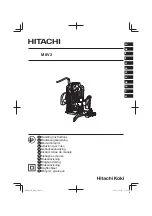
Approvals for SCALANCE W788C / W786C 802.11n
2.1 General approvals
Approvals SCALANCE W700 802.11n
44
Reference Manual, 11/2014, C79000-G8976-C392-01
However, there is no guarantee that interference will not occur in a particular installation. If
this equipment does cause harmful interference to radio or television reception, which can be
determined by turning the equipment off and on, the user is encouraged to try to correct the
interference by one or more of the following measures:
●
Reorient or relocate the receiving antenna.
●
Increase the separation between the equipment and receiver.
●
Connect the equipment into an outlet on a circuit different from that to which the receiver
is connected.
●
Consult the dealer or an experienced radio/TV technician for help.
___________________________________________________________________________
Notice
This equipment complies with FCC radiation exposure limits set forth for an uncontrolled
environment. This equipment should be installed and operated with minimum distance 20 cm
between the radiator and your body.
___________________________________________________________________________
This transmitter must not be co-located or operating in conjunction with any other antenna or
transmitter. Professional Installation Notice:
To comply with FCC part 15 rules in the United States, the system must be professionally
installed to ensure compliance with the Part 15 certification. It is the responsibility of the
operator and professional installer to ensure that only certified systems are deployed in the
United States. The use of the system in any other combination (such as co-located antennas
transmitting the same information) is expressly forbidden.
___________________________________________________________________________
Notice
For use of DFS channels
●
Use of the RCoax Cable Antenna 6XV1875-2D is not permitted in channels which
require dynamic frequency selection (DFS).
●
Any installation of either a master or a client device within 35 km of a TDWR (Terminal
Doppler Weather Radar) location shall be separated by at least 30 MHz (center-to-center)
from the TDWR operating frequency.
These devices shall be registered in the industry sponsored WISPA database,
http://udia.spectrumbridge.com/udia/home.aspx
http://udia.spectrumbridge.com/udia/home.aspx
When you open this link, you get the following choices:
–
"Search" opens a window with TDWR locations and frequencies.
–
"User Signup" allows you to register as user of the database.
–
After registering you can Logon and register your WLAN location. Please fill in all
required information.
For more information with respect to WISPA database and TWDR locations please consult
FCC publication KDB 443999 D01.
___________________________________________________________________________
















































